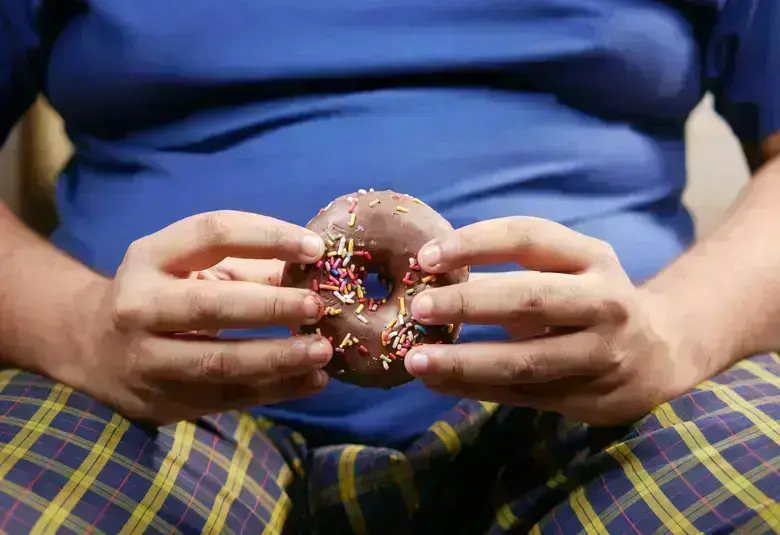Treatment-resistant depression is associated with a high disease burden, functional impairment, poor health-related quality of life and reduced productivity, according to recent real-world evidence from a European cohort study.1 The fact that resistant depression is a common – but treatable -- condition enhances the importance of early and effective intervention.
유럽의 한 코호트 연구에서 발견한 최근 실제 사례의 증거 자료에 따르면 치료 저항성 우울증은 높은 질병 부담, 기능 장애, 건강 문제로 인한 낮은 삶의 질, 생산성 하락과 관련이 있습니다.1 저항성 우울증은 흔하지만 치료가 가능한 질환이라는 사실을 고려하면 효과적인 조기 개입 치료의 중요성은 더욱 높아집니다.
Affected individuals and society in general bear a heavy cost due to treatment resistant depression (TRD), Allan Young (King’s College, London, UK) told a satellite meeting at EPA Virtual 2021.
2021년 유럽정신의학협회(EPA) 가상 학회의 위성 회의에서 앨런 영(Allan Young, 영국 런던 킹스 칼리지) 교수는 치료 저항성 우울증(TRD)으로 인해 해당 질환자들과 사회 전반이 막대한 비용을 지불하고 있다고 말했습니다.
A recent study of 411 patients with TRD (45% of whom had not responded adequately to three or more antidepressants) showed overall work impairment in 61%, unemployment in 30% and long-term sick leave in 19%.1 On the Clinical Global Impressions Scale for Severity, more than half were classified as markedly ill and 14% as severely ill.
치료 저항성 우울증 환자 411명을 대상으로 실시한 최근의 한 연구(대상자 중 45%가 항우울제 3종 이상에 적절한 반응을 보이지 않음)에서 전반적인 업무 능력 장애를 겪는 환자는 61%, 미취업 상태는 30%, 장기 병가는 19%로 나타났습니다.1 전반적 임상 인상 척도의 심각도를 측정한 결과, 절반 이상이 뚜렷한 장애로, 14%가 심각한 장애로 분류되었습니다.
According to a generally used definition of failure to respond to at least two consecutive and adequate trials of antidepressants, a third of patients with MDD are resistant to treatment, and this is associated with considerable distress, health care costs including hospitalization and visits to emergency departments, and suicide risk, Professor Young said.2-5
항우울제를 사용하는 적정 임상 치료에 대한 최소 2회 연속 반응 실패라는 일반적인 정의를 적용하는 경우, 주요우울장애 환자 중 1/3은 치료에 저항성을 보입니다. 이러한 결과는 극심한 괴로움, 입원 치료 및 응급실 이용 등의 치료 비용, 자살 위험과 관련이 있다고 영 교수는 설명했습니다.2-5
The best chance of achieving remission is within six months of MDD onset
주요우울장애 발병 후 6개월 이내가 관해에 이를 수 있는 가장 좋은 기회입니다
Early window of opportunity
조기에 잡아야 하는 기회
Taking up the theme, Diane McIntosh (Vancouver, British Columbia, Canada) positioned TRD within the wider context of partial responders and those with residual symptoms and functional impairment, and emphasized the window of opportunity afforded by effective early treatment. The best chance of achieving remission is within six months of the first onset of MDD,6 she reported.
이 사안에 대해 다이앤 매킨토시(Diane McIntosh, 캐나다 브리티시컬럼비아 밴쿠버) 박사는 부분적 반응 환자와 잔여 증상 및 기능 장애 환자로 치료 저항성 우울증의 범위를 확장하며, 효과적인 조기 치료로 잡을 수 있는 기회를 강조했습니다. 매킨토시 박사에 따르면 주요우울장애 환자가 관해에 이를 가능성이 가장 높은 시기는 최초 발병 후 6개월 이내입니다.6
In her clinical experience, full symptom resolution should almost always be an initial aim. Where therapy does not prove adequate, the question is between switching to a different monotherapy on the one hand or adjunctive medication on the other.
매킨토시 박사의 임상 치료 사례에서 증상 완치는 거의 대부분 최초 치료 시도에서 발생했습니다. 치료가 제대로 효과를 내지 못하는 경우, 다른 유형의 단일 요법으로 변경할 것인지 보조 치료 약물을 이용할 것인지를 선택해야 합니다.
Every antidepressant is a unique chemical entity, Dr McIntosh emphasized. Patient preference is always a factor, and guidelines such as those from CANMAT may prove helpful7– but treatment should always be tailored to the individual needs of the patient.
매킨토시 박사는 모든 항우울제가 각각 고유한 화학 물질이라는 점을 강조했습니다. 따라서 환자의 선호도를 늘 고려해야 하며, CANMAT 등의 가이드라인도 참고하면 좋습니다.7 단, 치료법은 반드시 환자별 요구 사항에 알맞은 방식이어야 합니다.
At the moment, the only guidance we have is based on clinical factors. But she looked forward to the near future in which there will be markers of likely response to different therapies based on brain structure and function.
현재는 임상 인자만을 지표로 활용하고 있습니다. 그러나 매킨토시 박사는 머지않아 뇌 구조 및 기능에 따라 다양한 치료법에 대한 반응을 예측할 수 있는 마커가 등장할 것으로 기대했습니다.
Gene expression profiling and inflammatory markers may predict response and help subtype MDD
유전자 발현 프로파일링과 염증 마커로 치료 반응을 예측하고 주요우울장애의 하위 유형을 구분할 수도 있습니다
Examples include patterns of dysfunctional connectivity in limbic and frontostriatal networks, right hippocampal volume, and anterior cingulate activity.8,9
변연계 및 전두선조체 회로의 기능 장애 연결성 패턴, 우측 해마 부피, 전측 대상 활동 등을 예로 들 수 있습니다.8,9
The “-omics” will come to our aid
다양한 학문을 정신 의학에 활용하게 됩니다
Genomics will also eventually contribute to personalized psychiatry, she suggested. Genetic polymorphisms that may interfere with HPA axis function and limit the normalization induced by antidepressants provide one example. Epigenetic phenomena influencing gene expression that may influence the efficacy of agents acting through the serotonin pathway are another.
매킨토시 박사는 유전체학도 결국에는 개인 맞춤형 정신 의학에 기여하게 될 것이라고 말했습니다. 일례로, 유전적 다형성은 시상하부-뇌하수체-부신(HPA) 축 기능을 방해하고 항우울제로 유도하는 정상화를 제한할 수 있습니다. 또 다른 예로, 유전자 발현에 영향을 미치는 후성 유전 현상은 세로토닌 경로를 따라 작용하는 약물의 효능에 영향을 줄 수 있습니다.
Transcriptomics and proteomics are also set to contribute. In the Genome-based Therapeutic Drugs for Depression study, non-responders had higher baseline leukocyte mRNA expression of the pro-inflammatory cytokine interleukin-1β, macrophage inhibiting factor (MIF) and TNF-α.10
전사체학과 단백체학도 정신 의학에 기여할 수 있습니다. 게놈 기반 우울증 치료제 연구에 따르면, 치료 반응을 보이지 않은 환자들은 전염증성 사이토카인 인터류킨-1β, 대식세포 억제 인자(MIF), TNF-α의 백혈구 mRNA 발현 기준치가 높았습니다.10
There are also data suggesting that likelihood of response relates to levels of C-reactive protein in peripheral blood.11
또한, 치료 반응 가능성은 말초 혈액 내 C-반응 단백 수치와 관련이 있음을 보여주는 데이터도 있습니다.11
The satellite symposium was supported by Janssen Pharmaceutical Companies of Johnson and Johnson in EMEA
이 위성 심포지엄은 EMEA 존슨앤드존슨 얀센 제약 부문(Janssen Pharmaceutical Companies of Johnson and Johnson)의 지원으로 개최되었습니다
Our correspondent’s highlights from the symposium are meant as a fair representation of the scientific content presented. The views and opinions expressed on this page do not necessarily reflect those of Lundbeck.




